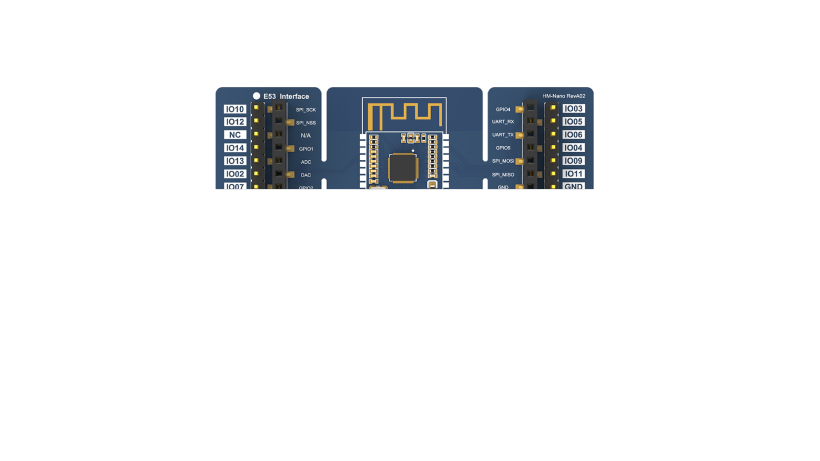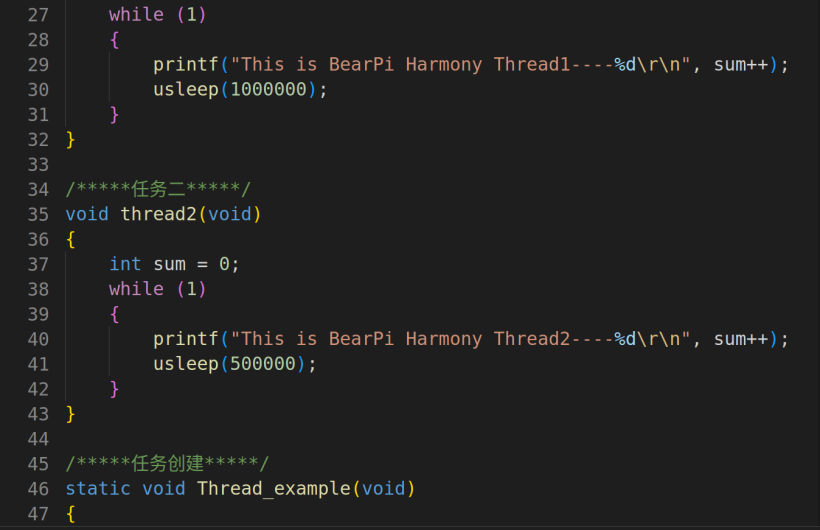回复
OpenHarmony-知识整理之HarmonyOS内核编程开发——Thread多线程 原创
HUAWEI_Engineer
发布于 2023-1-10 21:00
浏览
2收藏
::: hljs-center
HarmonyOS内核编程开发——Thread多线程
:::

Thread API分析:
osThreadId_t osThreadNew(osThreadFunc_t func, void *argument,const osThreadAttr_t *attr )
描述:
函数osThreadNew通过将线程添加到活动线程列表并将其设置为就绪状态来启动线程函数。线程函数的参数使用参数指针*argument传递。当创建的thread函数的优先级高于当前运行的线程时,创建的thread函数立即启动并成为新的运行线程。线程属性是用参数指针attr定义的。属性包括线程优先级、堆栈大小或内存分配的设置。可以在RTOS启动(调用 osKernelStart)之前安全地调用该函数,但不能在内核初始化 (调用 osKernelInitialize)之前调用该函数。
注意 :不能在中断服务调用该函数
| 名字 | 描述 | |
|---|---|---|
| func | 线程函数. |
| argumen | 作为启动参数传递给线程函数的指针 | |
|---|---|---|
| content2 | content3 |
void thread1(void)
{
int sum=0;
while (1)
{
/* code */
printf("This is BearPi-HM_Nano Thread1----%d\r\n",sum++);
usleep(1000000);
}
}
void thread2(void)
{
int sum=0;
while (1)
{
/* code */
printf("This is BearPi-HM_Nano Thread2----%d\r\n",sum++);
usleep(500000);
}
}
static void Thread_example(void)
{
osThreadAttr_t attr;
attr.name = "thread1";
attr.attr_bits = 0U;
attr.cb_mem = NULL;
attr.cb_size = 0U;
attr.stack_mem = NULL;
attr.stack_size = 1024*4;
attr.priority = 25;
if (osThreadNew((osThreadFunc_t)thread1, NULL, &attr) == NULL) {
printf("Falied to create thread1!\n");
}
attr.name = "thread2";
if (osThreadNew((osThreadFunc_t)thread2, NULL, &attr) == NULL) {
printf("Falied to create thread2!\n");
}
}

编译调试
修改 BUILD.gn 文件
修改 applications\BearPi\BearPi-HM_Nano\sample路径下 BUILD.gn 文件,指定 thread_example 参与编译。
“A1_kernal_thread:thread_example”,
#“A2_kernel_timer:timer_example”,
#“A3_kernel_event:event_example”,
#“A4_kernel_mutex:mutex_example”,
#“A5_kernel_semaphore:semaphore_example”,
#“A6_kernel_message:message_example”,
运行结果
示例代码编译烧录代码后,按下开发板的RESET按键,通过串口助手查看日志,Thread1和Thread2会交替打印信息
This is BearPi-HM_Nano Thread1----2
This is BearPi-HM_Nano Thread2----4
This is BearPi-HM_Nano Thread2----5
This is BearPi-HM_Nano Thread1----3
This is BearPi-HM_Nano Thread2----6
This is BearPi-HM_Nano Thread2----7

©著作权归作者所有,如需转载,请注明出处,否则将追究法律责任
标签
HarmonyOS内核编程开发——Thread多线程.zip 515.43K 43次下载
赞
3
收藏 2
回复
相关推荐




















